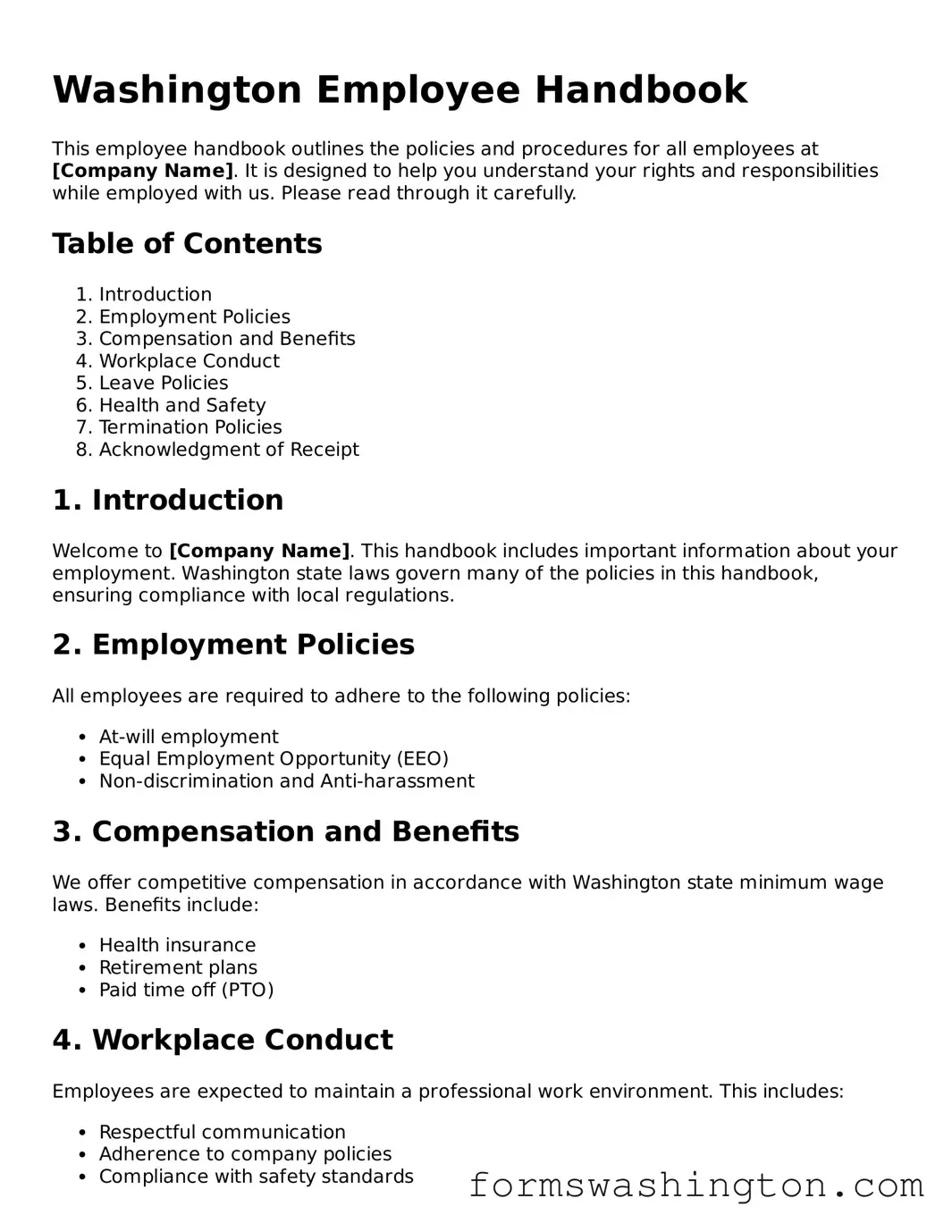Blank Employee Handbook Template for Washington State
The Washington Employee Handbook form is a crucial document that outlines workplace policies, employee rights, and company expectations. It serves as a guide for both employers and employees, ensuring everyone understands their roles and responsibilities. Having a well-prepared handbook can foster a positive work environment and promote compliance with state laws.
Open Editor Here
